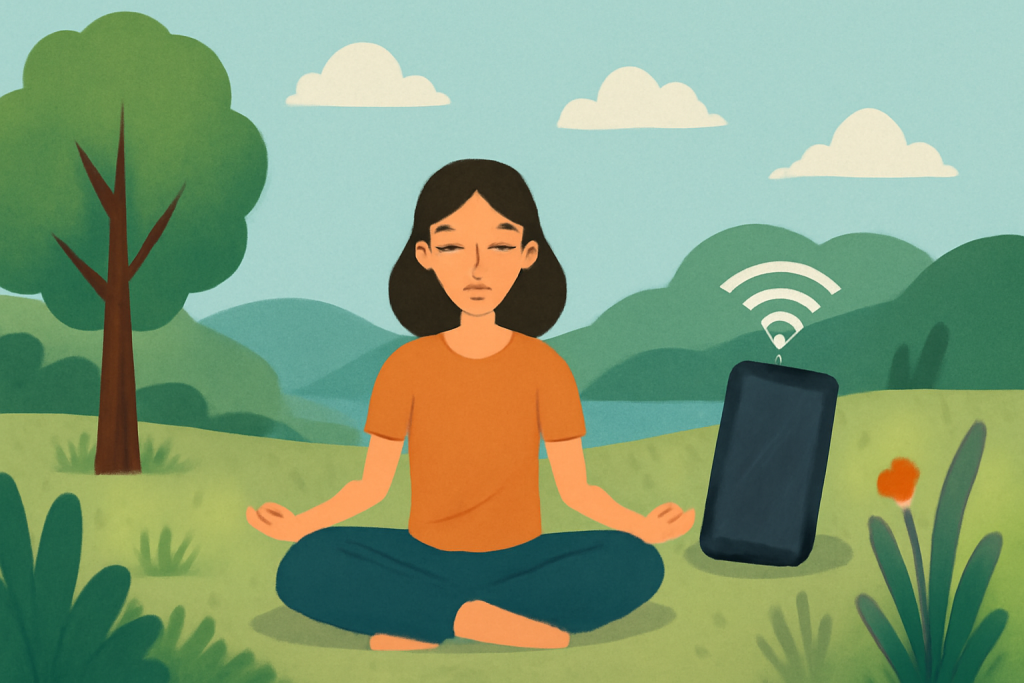In a world where screens dominate nearly every aspect of life—from work and socializing to entertainment and shopping—the idea of a digital detox has gained significant attention. Practicing a digital detox means deliberately reducing or eliminating the use of digital devices for a certain period to regain balance, improve mental health, and enhance focus. Given the growing concerns about screen time’s impact on well-being, learning how to practice digital detox effectively is more relevant than ever.
This article explores why digital detoxes matter, emerging trends in digital wellbeing, and practical strategies for incorporating detox practices into daily life.

Why Practice a Digital Detox?
The constant presence of smartphones, computers, and other devices can contribute to stress, anxiety, sleep problems, and reduced productivity. Research from the American Psychological Association (APA) finds that excessive screen time is linked to increased feelings of depression and loneliness (APA, 2023). Moreover, the pervasive nature of notifications and social media can fragment attention and erode focus.
A digital detox offers a way to step back, break habitual tech use, and restore healthier relationships with devices. It encourages mindfulness, improves sleep quality, and helps reduce cognitive overload.
Current Trends in Digital Detox
1. Short, Scheduled Breaks Over Extended Disconnect
While some opt for multi-day digital fasts, emerging evidence suggests that short, scheduled breaks throughout the day can be equally beneficial and more sustainable. For instance, using the “Pomodoro technique” for work—with planned screen-free intervals—has gained popularity for balancing productivity and mental rest (Journal of Occupational Health Psychology, 2022).
2. Integration of Tech Tools for Tech Control
Paradoxically, technology itself is becoming a tool to help manage digital use. Apps like Screen Time (iOS), Digital Wellbeing (Android), and third-party platforms offer insights and controls for managing screen time and app usage.
3. Mindfulness and Meditation Practices
More people combine digital detox efforts with mindfulness or meditation to deepen relaxation and mental clarity. These practices help address the psychological effects of constant connectivity.
How to Practice Digital Detox: Step-by-Step Guide
Here are practical, easy-to-follow steps for a successful digital detox:
1. Set Clear Goals and Boundaries
Decide the scope and duration of your detox. For example:
- No screens for 1 hour before bedtime
- Designated tech-free zones at home (e.g., dining area)
- Complete digital detox for a weekend day
Setting clear, realistic goals increases the chance of success.
2. Inform Others and Manage Expectations
Let friends, family, or coworkers know about your detox plans to reduce pressure to respond immediately.
3. Prepare Alternative Activities
Replace screen time with hobbies like reading, walking, cooking, or journaling. Having planned activities helps reduce the urge to check devices.
4. Disable Non-Essential Notifications
Turn off alerts that pull your attention unnecessarily. This lowers the distraction and anxiety associated with constant notifications.
5. Use Tech to Limit Tech
Leverage built-in tools or apps to monitor and restrict device use. For example:
- Set app time limits
- Use “Do Not Disturb” mode during focus periods
- Enable grayscale mode to make screens less appealing
6. Practice Mindfulness
Use mindfulness techniques during detox periods to notice urges to check devices without acting on them. Deep breathing or short meditations can support this process.
7. Reflect on Your Experience
After your detox, reflect on how it felt, what challenges arose, and any positive changes. Adjust future detox plans accordingly.
Benefits of Digital Detox
- Improved Sleep: Reducing screen exposure before bed enhances sleep quality by limiting blue light that disrupts circadian rhythms (Harvard Health Publishing, 2020).
- Reduced Stress: Less screen time lowers cortisol levels and promotes relaxation.
- Enhanced Focus: Limiting distractions improves attention span and productivity.
- Better Relationships: Being present without digital interruptions strengthens social connections.
Overcoming Challenges During Detox
- Fear of Missing Out (FOMO): Remind yourself that temporary disconnection is healthy and important.
- Work Demands: Plan detoxes during off-hours or communicate boundaries clearly with employers.
- Habitual Use: Start with short detoxes and gradually increase as your comfort grows.
Emerging Research and Future Directions
Recent studies emphasize the importance of balanced digital use rather than complete abstinence. The growing field of digital wellbeing focuses on integrating technology harmoniously into life rather than avoiding it altogether. Wearable devices and AI-driven recommendations are also being developed to personalize digital usage habits (Frontiers in Psychology, 2023).
Conclusion
Knowing how to practice digital detox effectively is vital in today’s tech-centric world. Whether it’s small daily breaks or longer device-free periods, a digital detox can improve mental clarity, reduce stress, and promote healthier habits. Combining goal setting, mindful practices, and tech tools makes detoxes manageable and meaningful.
By cultivating a balanced relationship with technology, individuals can enjoy the benefits of digital tools without falling prey to their downsides.
References
- American Psychological Association (APA). (2023). Stress in America 2023. https://www.apa.org/news/press/releases/stress/2023
- Harvard Health Publishing. (2020). Blue light has a dark side. https://www.health.harvard.edu/staying-healthy/blue-light-has-a-dark-side
- Journal of Occupational Health Psychology. (2022). Effects of Screen Breaks on Workplace Productivity. https://psycnet.apa.org/fulltext/2022-09399-001.html
- Frontiers in Psychology. (2023). Digital Wellbeing and Personalized Technology Use. https://www.frontiersin.org/articles/10.3389/fpsyg.2023.1122334/full






